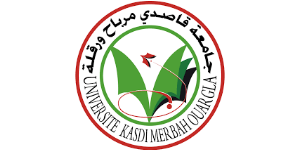La Filière Lait De Chamelle, Autre Alternative À La Polyfonctionnalité Du Dromadaire: - Cas De La Région De Ouargla -
Résumé: This study endeavors to elucidate the dynamics of the camel milk sector in the Ouargla region (Algerian northern Sahara). with a view to identifying the actors involved, the critical points and the alternatives for improving the sector. For this purpose, we conducted a series of surveys among 216 participants representing the various segments of the sector (production, processing and marketing), spread over different areas of the study region. Results show that the extensive farming predominates, accounting for 64% of practices. Most breeders (74.28%) are aged between 46 and 90, while younger breeders (aged 25 to 45) make up only 25.71%, suggesting that camel farming has low appeal for younger generations, which may threaten its long-term sustainability. Among the 70 breeders surveyed, 68.57% use camel milk for self-consumption or gifting, while only 17% sell it. Daily milk sales average 27 liters in extensive systems, 13.5 liters in intensive systems, and 20.2 liters in semi-intensive systems, with peri-urban farms reaching a peak of 58 liters. The peri-urban system presents an opportunity to increase local incomes through camel milk sales. The analysis of marketing channels reveals three main types, dominated by informal networks that hinder the sector's structuring. Camel milk production costs range from 16.76 DA to 151.18 DA per liter, with profit margins ranging from 348.82 DA to 483.24 DA per liter. Each farming system has specific advantages and limitations: extensive systems are economically viable at low cost but have low productivity, while semi-intensive and peri-urban systems, though more expensive, offer higher profitability due to increased milk production and optimized herd management. The study of consumption motivations reveals that 83% of respondents citing the nutritional and medicinal benefits of camel milk as key factors. However, its high price, combined with consumers' purchasing power, limits both the quantity consumed and the frequency of purchases. Despite these opportunities, the camel milk sector in Ouargla remains underdeveloped and faces multiple obstacles, including collection difficulties, a lack of processing facilities, and high selling prices, making camel milk a luxury product. To ensure sustainable sector development and maximize economic benefits for involved stakeholders, it is essential to overcome these structural challenges.
Mots-clès:
Nos services universitaires et académiques
Thèses-Algérie vous propose ses divers services d’édition: mise en page, révision, correction, traduction, analyse du plagiat, ainsi que la réalisation des supports graphiques et de présentation (Slideshows).
Obtenez dès à présent et en toute facilité votre devis gratuit et une estimation de la durée de réalisation et bénéficiez d'une qualité de travail irréprochable et d'un temps de livraison imbattable!


